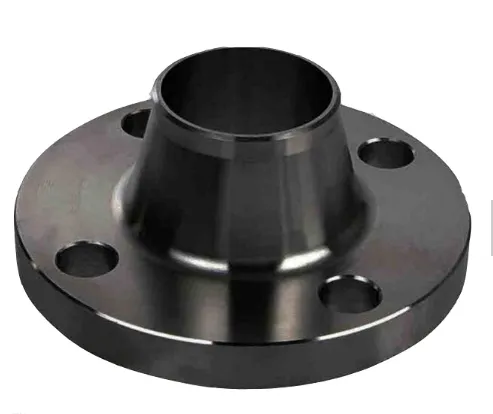-
Cangzhou Yulong Steel Co., Ltd.
-
Phone:
+86 13303177267 -
Email:
admin@ylsteelfittings.com
- English
- Arabic
- Italian
- Spanish
- Portuguese
- German
- kazakh
- Persian
- Greek
- French
- Russian
- Polish
- Thai
- Indonesian
- Vietnamese
- Zulu
- Korean
- Uzbek
- Hindi
- Serbian
- Malay
- Ukrainian
- Gujarati
- Haitian Creole
- hausa
- hawaiian
- Hebrew
- Miao
- Hungarian
- Icelandic
- igbo
- irish
- Japanese
- Javanese
- Kannada
- Khmer
- Rwandese
- Afrikaans
- Albanian
- Amharic
- Armenian
- Azerbaijani
- Basque
- Belarusian
- Bengali
- Bosnian
- Bulgarian
- Catalan
- Cebuano
- China
- China (Taiwan)
- Corsican
- Croatian
- Czech
- Danish
- Esperanto
- Estonian
- Finnish
- Frisian
- Galician
- Georgian
- Kurdish
- Kyrgyz
- Lao
- Latin
- Latvian
- Lithuanian
- Luxembourgish
- Macedonian
- Malgashi
- Malayalam
- Maltese
- Maori
- Marathi
- Mongolian
- Myanmar
- Nepali
- Norwegian
- Norwegian
- Occitan
- Pashto
- Dutch
- Punjabi
- Romanian
- Samoan
- Scottish Gaelic
- Sesotho
- Shona
- Sindhi
- Sinhala
- Slovak
- Slovenian
- Somali
- Sundanese
- Swahili
- Swedish
- Tagalog
- Tajik
- Tamil
- Tatar
- Telugu
- Turkish
- Turkmen
- Urdu
- Uighur
- Welsh
- Bantu
- Yiddish
- Yoruba

Oct . 05, 2024 14:14 Back to list
weld reducer
Understanding Weld Reducers Applications, Types, and Benefits
Weld reducers are essential components in various industries, particularly in piping and plumbing applications, where they serve a critical role in facilitating the flow of fluids within a system. Their main function is to connect two pipes of different diameters, allowing for a smooth transition from a larger pipe to a smaller one, or vice versa. This process is crucial for maintaining pressure and flow rates in fluid transport systems. In this article, we will explore the concept of weld reducers, their types, applications, and benefits in modern engineering.
What is a Weld Reducer?
A weld reducer is a type of pipe fitting that is used in piping systems to connect pipes with different diameters. It is typically fabricated from materials such as stainless steel, carbon steel, or other alloys, which provides durability and resistance to various environmental conditions. The term weld indicates that the reducer is designed to be welded onto the ends of pipes, creating a strong and leak-proof connection.
Reducers are available in two main configurations concentric and eccentric. A concentric reducer features a symmetrical design that allows for a simple transition between pipe sizes, while an eccentric reducer has one side that is flat, allowing for better alignment in horizontal applications.
Types of Weld Reducers
1. Concentric Reducers These are the most commonly used type of weld reducer. They maintain a constant diameter in a uniform shape, making them suitable for vertical piping applications. Their design helps in preventing turbulence and ensuring smooth flow.
2. Eccentric Reducers These are particularly useful in horizontal systems. The flat side of the eccentric reducer aids in maintaining a level system, reducing the risk of gas pockets or traps that could hinder flow.
3. Tapered Reducers Tapered or transition reducers feature a gradual slope from one diameter to another, which can help further minimize turbulence and pressure drop.
Each type of reducer is designed for specific applications, and selecting the right type is crucial for optimal performance in any piping system.
Applications of Weld Reducers
Weld reducers are used across various industries, including
weld reducer

- Oil and Gas In oil and gas transportation, reducers help connect pipelines of varying sizes, allowing for efficient flow and control of hydrocarbons.
- Water and Wastewater Treatment These fittings facilitate the transition between different pipe sizes used in treatment plants, ensuring smooth operation and effective waste management.
- Chemical Processing In chemical manufacturing, reducers are vital for systems that require precise flow control and volume management of different chemicals.
- Food and Beverage Weld reducers are also used in sanitary applications where the flow of liquids must remain uncontaminated, allowing for seamless transitions in processing equipment.
Benefits of Using Weld Reducers
1. Durability Weld reducers are designed to withstand extreme conditions, including high pressure and temperature, making them suitable for demanding industrial applications.
2. Leak-Free Connections Welding provides a stronger and more reliable connection compared to other joining methods, reducing the risk of leaks that can lead to significant operational challenges.
3. Versatility With various designs and materials available, weld reducers can be tailored for many applications across different industries.
4. Cost-Effective By allowing for the efficient movement of fluids and reducing the risk of pressure loss, weld reducers can contribute to lower operational costs and maintenance needs.
5. Enhanced Flow Efficiency The streamlined design of reducers minimizes turbulence, promoting better flow characteristics within the piping system.
Conclusion
In conclusion, weld reducers play a vital role in connecting pipes of different diameters in a variety of industrial applications. Their durability, reliability, and versatility make them an essential component in any fluid transport system. As industries continue to evolve, the importance of efficient fluid management will only grow, further solidifying the role of weld reducers in modern engineering. Whether in oil and gas, water treatment, or chemical processing, understanding and effectively utilizing weld reducers is key to achieving operational efficiency and safety.
Latest news
-
ANSI 150P SS304 SO FLANGE
NewsFeb.14,2025
-
ASTM A333GR6 STEEL PIPE
NewsJan.20,2025
-
ANSI B16.5 WELDING NECK FLANGE
NewsJan.15,2026
-
ANSI B16.5 SLIP-ON FLANGE
NewsApr.19,2024
-
SABS 1123 FLANGE
NewsJan.15,2025
-
DIN86044 PLATE FLANGE
NewsApr.19,2024
-
DIN2527 BLIND FLANGE
NewsApr.12,2024
-
JIS B2311 Butt-Welding Fittings LR/SR 45°/90° /180°Seamless/Weld
NewsApr.23,2024











